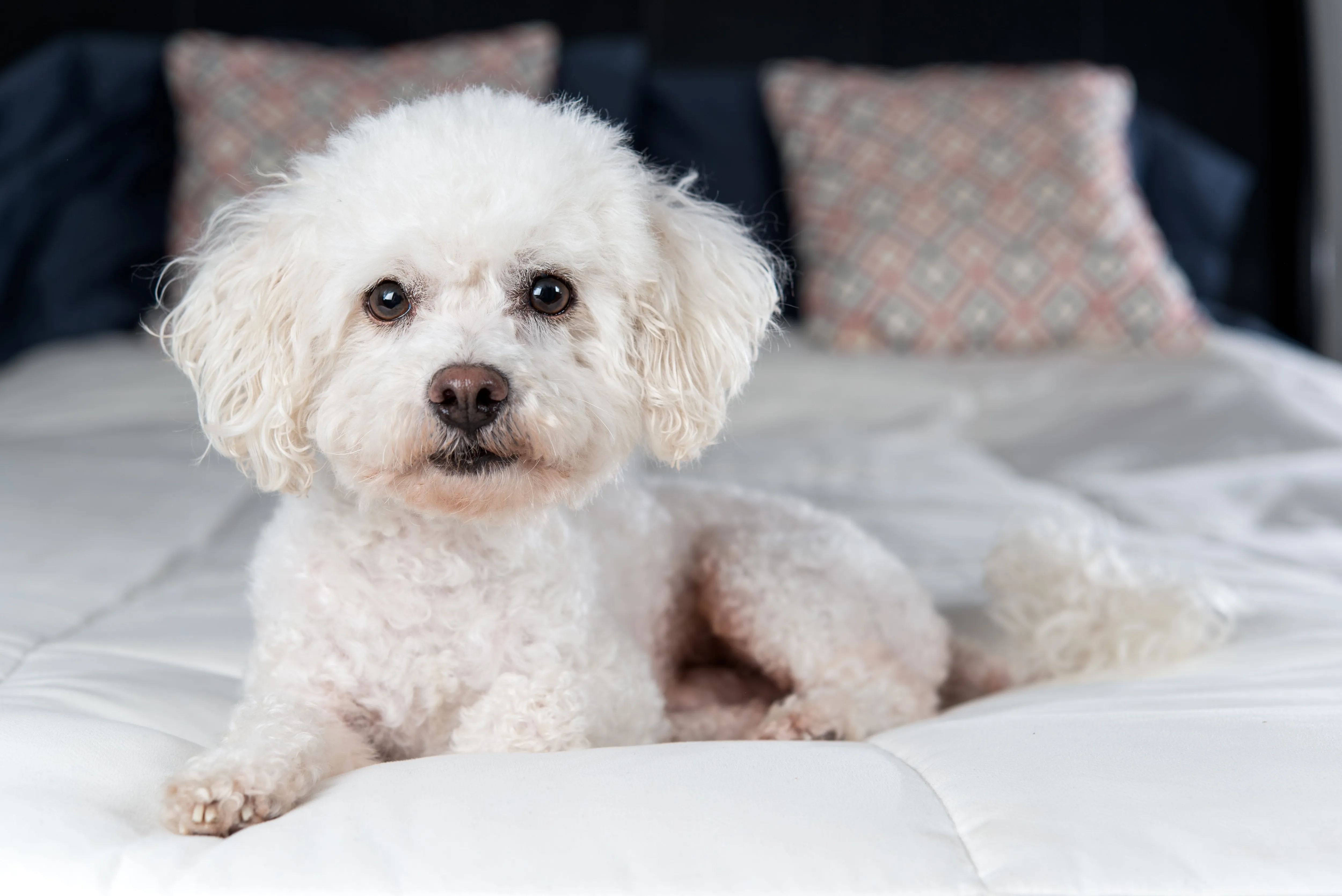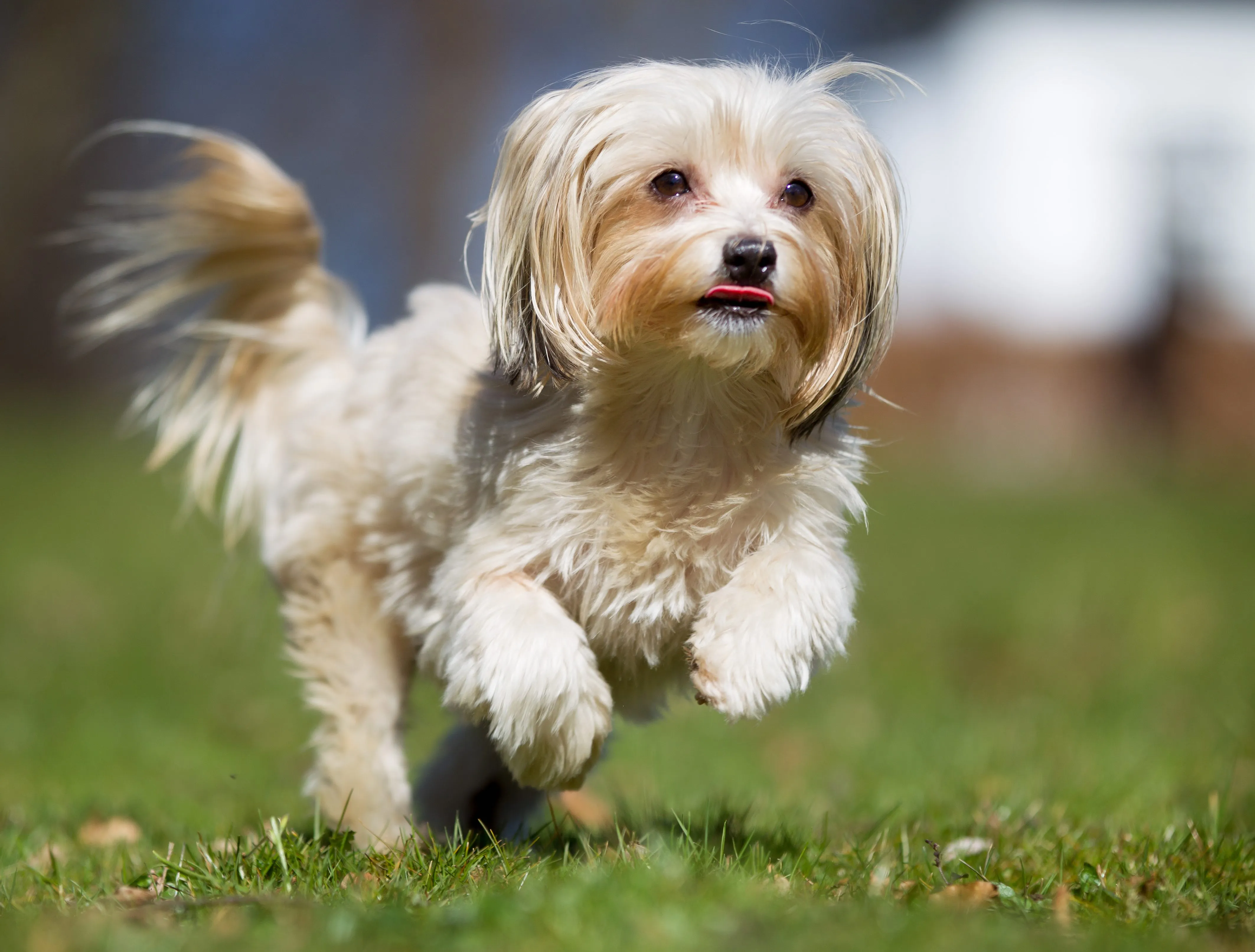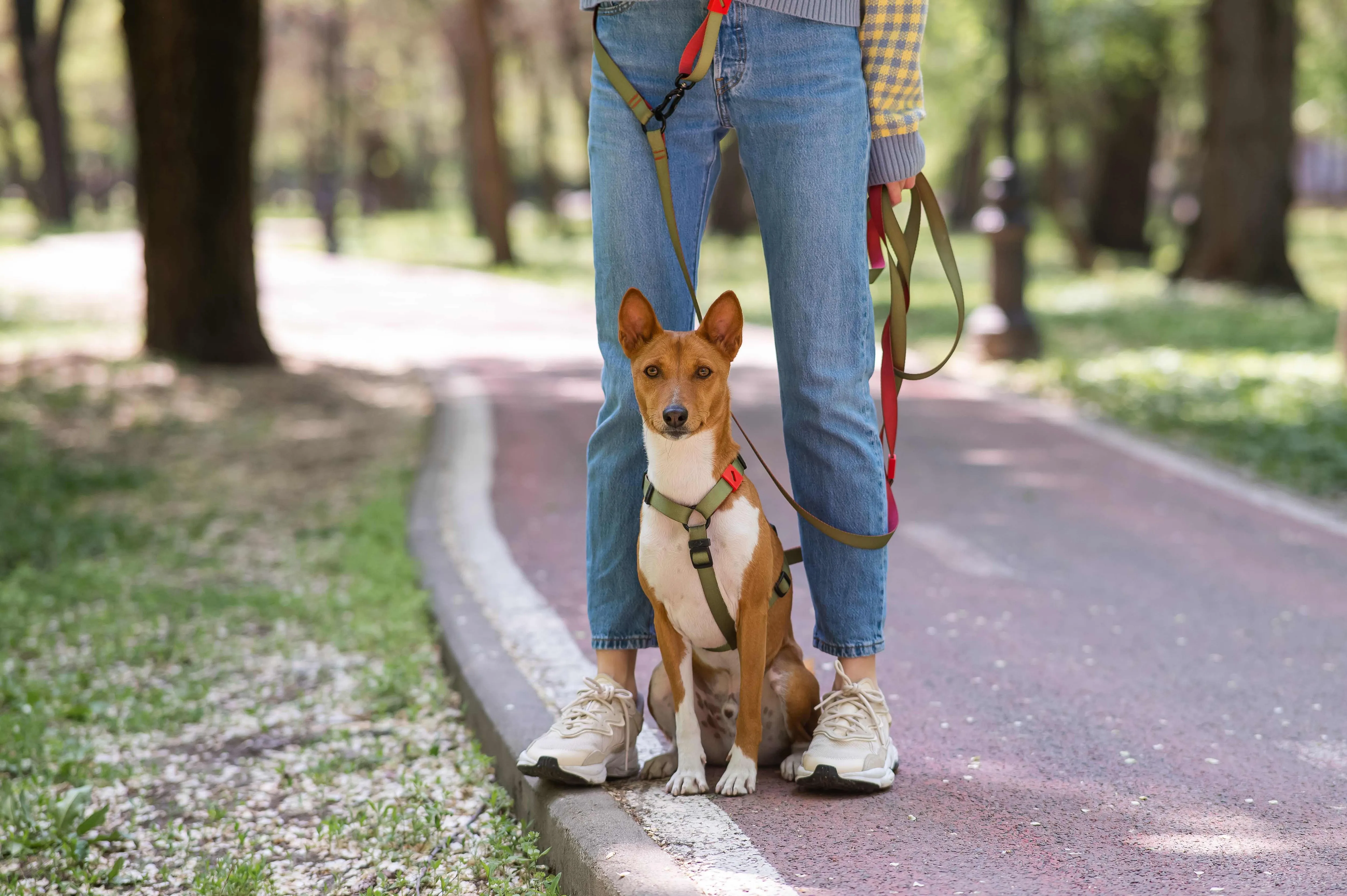Choosing a canine companion is a significant decision, especially for individuals or families concerned about allergies, household cleanliness, or simply seeking a pet with a robust health profile. The good news is that you don’t have to compromise! There are numerous wonderful healthy dog breeds that don’t shed much, offering a fantastic blend of minimal hair cleanup and a lower likelihood of common health issues. These breeds often come with coats that are more hair-like than fur, meaning they grow continuously and shed minimally, reducing dander and allergens in your home.
This comprehensive guide will explore some of the most resilient and low-shedding dog breeds, delving into their unique characteristics, general health, and what makes them ideal companions for various lifestyles. Understanding these aspects will help you make an informed choice for a long and healthy life together.
The Appeal of Healthy, Non-Shedding Dogs
The desire for a dog that doesn’t shed often stems from more than just wanting a clean home. For many, it’s a necessity driven by allergies. Dogs with hair that grows continuously and sheds minimally are often referred to as “hypoallergenic,” as they produce less dander (tiny flakes of skin) which is the primary allergen for many people. Beyond the hypoallergenic benefits, low-shedding breeds typically require less frequent vacuuming and lint rolling, making them a popular choice for busy households.
Combining this trait with inherent good health means fewer trips to the vet for common ailments, potentially lower veterinary costs over a dog’s lifetime, and the joy of having an energetic and long-lived companion. These breeds are often known for their overall hardiness and vitality, provided they receive proper care, nutrition, and exercise. For those seeking breeds of dogs that don’t shed a lot, focusing on healthy options ensures a truly rewarding pet ownership experience.
Top Healthy Dog Breeds That Don’t Shed
When searching for a new furry family member, prioritizing breeds known for both their robust health and low-shedding coats can lead to a happier, healthier home environment. Here are some of the best choices:
Poodle (Standard, Miniature, and Toy)
 apricot standard poodle standing on a hiking trail
apricot standard poodle standing on a hiking trail
Poodles, regardless of their size (Standard, Miniature, or Toy), are renowned for their intelligence, elegant appearance, and non-shedding, curly coats. This breed is an excellent choice for allergy sufferers because their unique coats trap loose hair and dander, preventing it from spreading around the house. They are incredibly versatile and eager to please, excelling in obedience, agility, and various dog sports.
Beyond their hypoallergenic qualities, Poodles are generally very healthy dogs with lifespans often ranging from 12 to 15 years. While they can be predisposed to certain conditions like hip dysplasia, Addison’s disease, or bloat, responsible breeding practices help minimize these risks. Regular grooming, including brushing and professional clipping every 4-6 weeks, is essential to prevent matting and keep their coat healthy. Their bright minds and active bodies mean they require consistent physical and mental stimulation to thrive.
Bichon Frise
 white bichon frise dog lying on a bed
white bichon frise dog lying on a bed
The Bichon Frise is a cheerful, playful, and affectionate small dog with a cotton-ball-like white coat that sheds minimally. Their charming personality makes them excellent companions, known for bringing joy and laughter to their families. This breed is particularly well-suited for apartment living due to their size and moderate exercise needs, often satisfied with indoor play and short daily walks.
Bichons typically enjoy long and healthy lives, often reaching 14 to 15 years. While they are generally a robust breed, potential health concerns can include allergies, dental issues, and patellar luxation. Their non-shedding coat, however, requires diligent grooming to prevent matting, necessitating daily brushing and professional grooming every few weeks. This makes them a great option among small healthy dogs that don’t shed.
Havanese
 tan and white havanese dog running through grass
tan and white havanese dog running through grass
As the national dog of Cuba, the Havanese is celebrated for its outgoing personality, intelligence, and silky double coat that sheds very little. These adaptable dogs thrive on companionship and are known for their playful antics and affectionate nature. They are eager to learn and respond well to positive reinforcement training, making them excellent family pets.
Havanese dogs are generally hardy and can live for 14 to 16 years. While they are a relatively healthy breed, responsible breeders screen for conditions such as patellar luxation, progressive retinal atrophy, and elbow dysplasia. Their beautiful, low-shedding coat does require regular maintenance, including daily brushing to prevent tangles and mats. This attention to grooming is a small price to pay for a lively, healthy, and allergy-friendly companion.
Basenji
 basenji dog on a walk sitting in front of a person
basenji dog on a walk sitting in front of a person
Often described as “cat-like” due to their fastidious grooming habits and independent nature, the Basenji is a unique, barkless dog breed with a short, fine coat that sheds very minimally. Originating from Central Africa, these dogs are highly intelligent, energetic, and possess a distinct “yodel” instead of a traditional bark. They make excellent companions for active individuals or families who appreciate their curious and somewhat aloof demeanor.
Basenjis are known for their overall good health and can live for 10 to 12 years. While generally healthy, the breed can be genetically predisposed to Fanconi syndrome, a kidney disease, and progressive retinal atrophy. Responsible breeders conduct genetic testing to minimize these risks. Their low-maintenance coat requires only occasional brushing to keep it clean and healthy, making them one of the easiest dogs that don’t shed a lot of hair to groom.
Chinese Crested
 hairless chinese crested dog standing on its hind legs in grass
hairless chinese crested dog standing on its hind legs in grass
The Chinese Crested is a distinctive breed that comes in two varieties: hairless and powderpuff. The hairless variety is virtually shed-free, featuring soft skin and tufts of hair on its head, paws, and tail. The powderpuff variety, while having a full coat of fine, silky hair, is also a very low-shedding dog. Both types are deeply devoted to their pet parents and are known for being affectionate and playful.
These elegant dogs are generally healthy, with a typical lifespan of 13 to 15 years. Health concerns can include dental issues (especially in the hairless variety), patellar luxation, and progressive retinal atrophy. The hairless type requires special skincare, including sunscreen and moisturizing, while the powderpuff needs regular brushing to prevent matting. For those seeking truly unique healthy dog breeds that don’t shed, the Chinese Crested offers an intriguing choice.
Greyhound and Whippet
 two tan and white whippets lying in grass
two tan and white whippets lying in grass
While the original article mentions Greyhounds and Whippets as healthy breeds, it’s worth highlighting their extremely low-shedding coats. These sighthounds possess sleek, short, and fine coats that require minimal grooming and shed very little, making them an excellent choice for those seeking a low-maintenance coat. Despite their speed and athletic prowess, both breeds are surprisingly calm and gentle indoors, earning them the nickname “45-mph couch potatoes.”
Greyhounds and Whippets are generally healthy dogs, with Greyhounds typically living 10-13 years and Whippets 12-15 years. They are known for their robust health but can be predisposed to certain conditions like bloat, osteosarcoma (Greyhounds), or deafness (Whippets). Their minimal shedding makes them a great option for owners who appreciate cleanliness without extensive grooming routines. They are perfect examples of dogs that don’t shed a lot medium sized and even big dogs that don’t shed a lot (for Greyhounds).
Miniature Schnauzer
Miniature Schnauzers are robust, intelligent, and spirited dogs known for their distinctive wiry coats that shed very little. Their compact size and adaptable nature make them suitable for various living situations, including apartments. These dogs are alert and make excellent watchdogs, thriving on interaction with their families.
Generally a very healthy breed, Miniature Schnauzers typically live for 12 to 15 years. While sturdy, they can be prone to certain genetic conditions such as pancreatitis, bladder stones, and certain eye conditions. Their low-shedding coat requires regular grooming, including brushing several times a week and professional clipping or hand-stripping every 5-8 weeks to maintain its texture and prevent matting. They are a popular choice among medium sized dogs that dont shed a lot due to their friendly disposition and manageable size.
Portuguese Water Dog
The Portuguese Water Dog is an energetic and intelligent breed with a distinctive wavy or curly coat that is virtually non-shedding. Bred to assist fishermen, these dogs are natural swimmers and require a significant amount of physical and mental exercise to stay happy and well-behaved. Their outgoing and loyal nature makes them wonderful family pets for active households.
Portuguese Water Dogs are known for their generally good health and an average lifespan of 11 to 13 years. Like many purebreds, they can be prone to certain genetic conditions such as hip dysplasia, juvenile dilated cardiomyopathy, and progressive retinal atrophy. Responsible breeders conduct extensive health screenings to reduce these risks. Their non-shedding coat demands regular grooming, including daily brushing and professional clipping every 6-8 weeks, to prevent matting and maintain their characteristic look.
Soft Coated Wheaten Terrier
The Soft Coated Wheaten Terrier is a joyful and spirited dog recognized by its luscious, soft, single coat that sheds minimally. These affectionate dogs are known for their “Wheaten greetin’,” a lively jump-up-and-kiss-you welcome. They are playful, loyal, and do well with active families who can provide them with sufficient exercise and attention.
Wheatens are generally healthy, living an average of 12 to 14 years. However, they can be predisposed to certain protein-losing diseases (Protein-Losing Enteropathy and Protein-Losing Nephropathy) and renal dysplasia. Diligent health screening by breeders is crucial. Their beautiful, low-shedding coat requires daily brushing to prevent tangles and mats, making grooming a consistent commitment for this otherwise low-shedding breed.
Coton de Tulear
The Coton de Tulear is a charming, small companion dog named after the city of Tulear in Madagascar. They are famous for their soft, cotton-like coat that is virtually non-shedding, making them an excellent choice for allergy sufferers. Cotons are intelligent, playful, and deeply devoted to their families, often described as “anti-stress” dogs due to their cheerful demeanor.
Cotons are known for being a robust and healthy breed, with a long lifespan often extending 14 to 16 years. While generally healthy, potential concerns include patellar luxation and certain eye issues. Their beautiful coat requires regular brushing, ideally daily, to prevent matting and keep it in pristine condition, a typical trade-off for dogs that don’t shed a lot of hair.
Yorkshire Terrier
The Yorkshire Terrier, or “Yorkie,” is a small but mighty dog with a confident personality and a long, silky, non-shedding coat that resembles human hair. Despite their diminutive size, Yorkies are full of energy, intelligence, and a tenacious spirit. They form strong bonds with their owners and can be surprisingly protective.
Yorkies are generally a healthy breed with a lifespan of 11 to 15 years. Common health considerations can include dental issues, patellar luxation, and tracheal collapse. Their beautiful, fine hair requires daily brushing to prevent tangles and knots, and many owners opt for professional grooming to keep their coats tidy and manageable. This makes them a popular choice for those looking for a small, non-shedding companion.
Shih Tzu
The Shih Tzu, an ancient breed originating from Tibet, is a beloved companion dog known for its flowing, floor-length coat and affectionate nature. Despite their luxurious double coat, Shih Tzus are considered low-shedding, primarily due to the continuous growth of their hair, which traps loose strands rather than releasing them. They are playful, outgoing, and thrive on human companionship.
Shih Tzus are generally healthy and can live for 10 to 16 years. Common health issues may include respiratory problems (due to their brachycephalic snout), eye conditions, and patellar luxation. Their beautiful coat requires daily brushing to prevent matting and keep it clean, often accompanied by regular trims or professional grooming.
Important Considerations When Choosing a Low-Shedding Breed
While a low-shedding coat is a significant advantage, it’s crucial to remember that “non-shedding” doesn’t mean “no maintenance.” Many of these breeds require consistent grooming to prevent their continuously growing hair from matting. This often includes daily brushing, regular professional grooming appointments, and attention to skin care. These grooming needs can sometimes be more time-consuming and costly than dealing with shedding.
Furthermore, every dog, regardless of breed, needs proper exercise, mental stimulation, and a balanced diet to maintain optimal health. When considering healthy dog breeds that don’t shed, remember to research each breed’s specific needs regarding activity levels, temperament, and potential health predispositions to ensure a perfect match for your lifestyle. Always choose a responsible breeder who prioritizes health testing to give your future companion the best start in life.
Conclusion
Finding the perfect dog involves balancing many factors, from personality and energy levels to size and health. For those seeking a clean home environment and fewer allergy triggers, healthy dog breeds that don’t shed offer a wonderful solution. Breeds like Poodles, Bichon Frise, Havanese, Basenji, Chinese Crested, Miniature Schnauzer, Portuguese Water Dog, Soft Coated Wheaten Terrier, Coton de Tulear, Yorkshire Terrier, and Shih Tzu combine robust health with minimal shedding, making them ideal companions.
Remember that a low-shedding coat often means a high-maintenance grooming routine. By understanding the unique needs of these remarkable breeds, you can welcome a loving, healthy, and allergy-friendly canine into your home, ensuring a lifetime of joy and companionship. Explore more about specific breed characteristics and care tips on Dog Care Story to make the best choice for your family!
